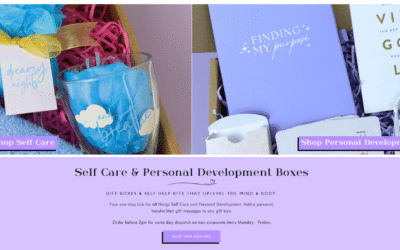
Image via Freepik
Pay inequality remains one of fashion’s most persistent injustices. When women discover they’re being underpaid compared to male colleagues, they have a range of structured, rights-based, and strategic options: document, benchmark, confront, escalate, and future-proof. This article explains how — while also showing how to strengthen long-term career leverage through education, collective action, and reputation-building.
The First Step: Confirm, Don’t Assume
Discovering a pay gap is emotional, but confirmation is essential before taking action. Compare your pay to peers in similar roles, factoring in seniority, location, and bonuses. Tools such as Glassdoor, PayScale, and industry-specific compensation reports can help you validate the gap objectively.
Strengthen Career Leverage Through Continuous Education
Improving your qualifications can expand your negotiation power, mobility, and earning potential across fashion management, merchandising, and branding. Earning a degree — particularly one aligned with business or design management — helps you move into leadership roles where women are chronically underrepresented.
Online programs now make this accessible: earning an online business degree allows you to build core skills in accounting, marketing, finance, and entrepreneurship while continuing to work full-time or manage family responsibilities (this may help). Beyond credentials, education demonstrates initiative and future-readiness — traits fashion executives notice.
For related learning platforms, check Coursera, edX, and FutureLearn.
Problem → Solution → Result Framework
Problem: Pay inequity rooted in opaque compensation and gender bias.
Solution: Collect transparent data, document your case, and address leadership through structured dialogue.
Result: Improved equity, stronger career leverage, and higher long-term earning potential.
How-To: Respond Strategically to Pay Disparity
- Gather Documentation – Keep offer letters, pay slips, and HR communications.
- Benchmark the Market – Use salary comparison platforms or union data.
- Request a Formal Review – Schedule a pay-equity discussion with HR or your manager.
- Leverage Allies – Collaborate with colleagues or advocacy groups such as The Fashion Minority Alliance.
- Negotiate with Facts, Not Frustration – Present objective data.
- Escalate If Needed – File a confidential complaint or seek legal counsel from resources like Equal Rights Advocates.
- Plan Forward – Build new skills and credentials that increase your market value.
Quick-Check List
| Task | Description | Done |
|---|---|---|
| ✅ Verify numbers | Compare salary data across similar roles and regions | ☐ |
| ✅ Collect evidence | Retain all HR and pay correspondence | ☐ |
| ✅ Seek allies | Identify mentors or women’s networks in fashion | ☐ |
| ✅ Research training | Look for online leadership or business courses | ☐ |
| ✅ Evaluate timing | Plan discussions around performance reviews | ☐ |
Essential Considerations (Table Form)
| Approach | Short-Term Effect | Long-Term Benefit | Typical Risks |
|---|---|---|---|
| Internal negotiation | May yield immediate adjustment | Builds internal credibility | Possible workplace tension |
| External job offer | Forces employer comparison | Can lead to significant pay jump | Requires market readiness |
| Legal complaint | Enforces accountability | Creates precedent | Lengthy, emotionally taxing |
| Upskilling / degree | Expands future earning ceiling | Increases authority & leadership potential | Requires time investment |
| Collective advocacy | Improves systemic fairness | Builds reputation beyond one firm | Coordination complexity |
Checklist for Evaluating Offers in Fashion
- Salary benchmarked to role, region, and specialization
- Clear job title and responsibility scope
- Transparent promotion path
- Pay equity disclosure or commitment policy
- Mentorship or leadership development options
- Inclusive culture metrics (ask directly in interviews)
Related Resources to Explore
- UN Women Pay Transparency Guidelines
- Fashion Revolution Transparency Index
- LinkedIn Learning: Negotiation Foundations
- British Fashion Council Careers Hub
- Fair Pay Workplace
- Human Rights Campaign Workplace Equality Index
- Creative Women’s Network
Product Spotlight: Professional Portfolio Tools
While pay advocacy focuses on fairness, visibility also drives negotiation power. Portfolio-building platforms such as Behance and digital-first design suites like Canva help you present your creative and strategic range clearly. A polished, shareable portfolio can reinforce credibility when pursuing senior roles or freelance contracts.
FAQ
Q1: Should I discuss salary disparities with coworkers?
Yes — within reason. Salary transparency is legal in many regions and often the only path to detecting systemic bias.
Q2: How do I avoid retaliation?
Document every communication and, if possible, loop in HR or an ombuds officer to create an official record.
Q3: What if HR dismisses my concern?
Escalate to external regulators or equal-pay advocacy groups. Keep records — retaliation claims rely on timelines.
Q4: Is switching companies my only option?
Not necessarily. Many women have achieved pay corrections internally after formal equity reviews or external benchmarking.
Glossary
Pay Transparency – Public or internal disclosure of compensation ranges to ensure equity.
Benchmarking – Comparing pay rates to industry or regional standards.
Upskilling – Acquiring new abilities to qualify for higher-level positions.
Collective Advocacy – Organizing or collaborating with others to address systemic workplace issues.
Equity Audit – Internal analysis of pay, promotion, and representation disparities.
Pay gaps in the fashion industry persist, but strategic action — grounded in data, documentation, and education — can narrow them. Whether through negotiation, re-skilling, or career advancement, women can transform inequity into opportunity. Remember: transparency and preparation are power.
You may write to us at: fashionnovationfd@gmail.com
You can also read:
Weathering the Storm: How Fashion Entrepreneurs Can Stay Resilient in Hard Times




0 Comments